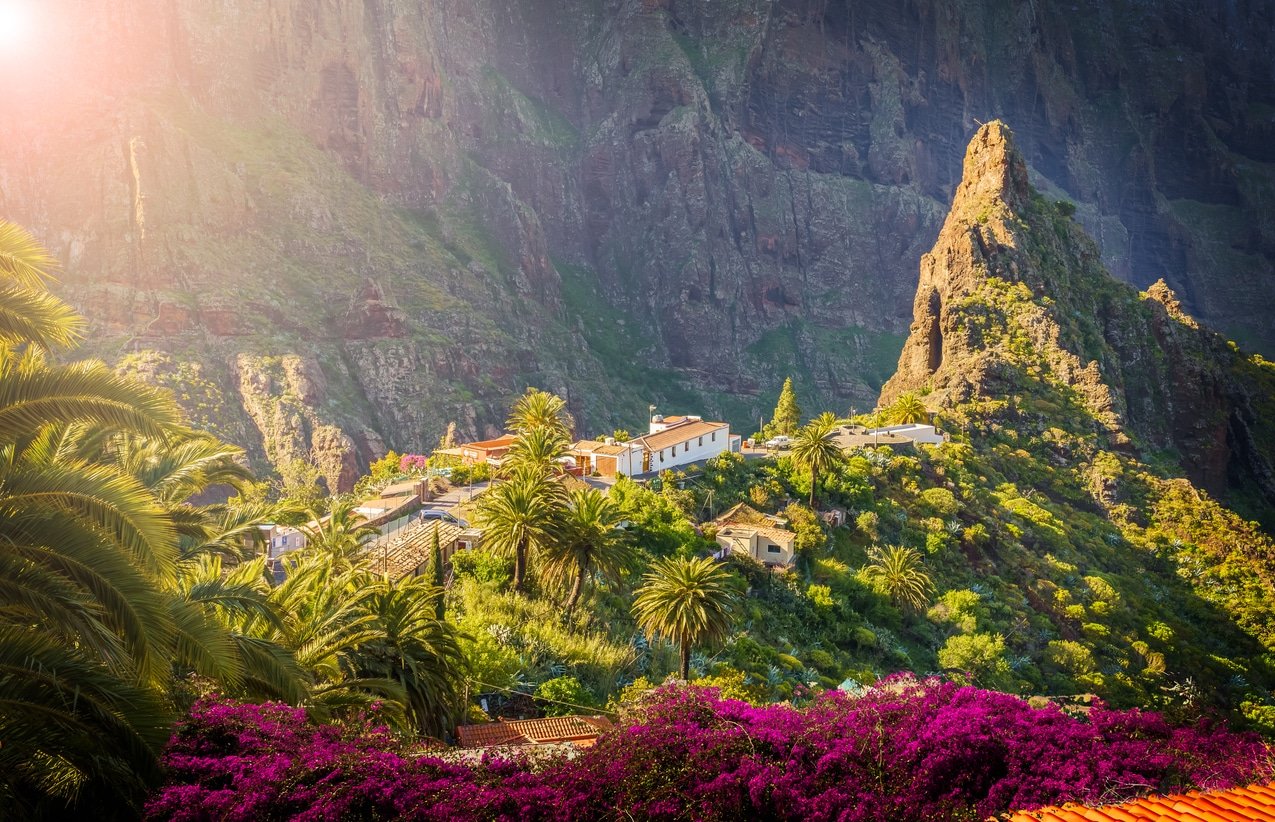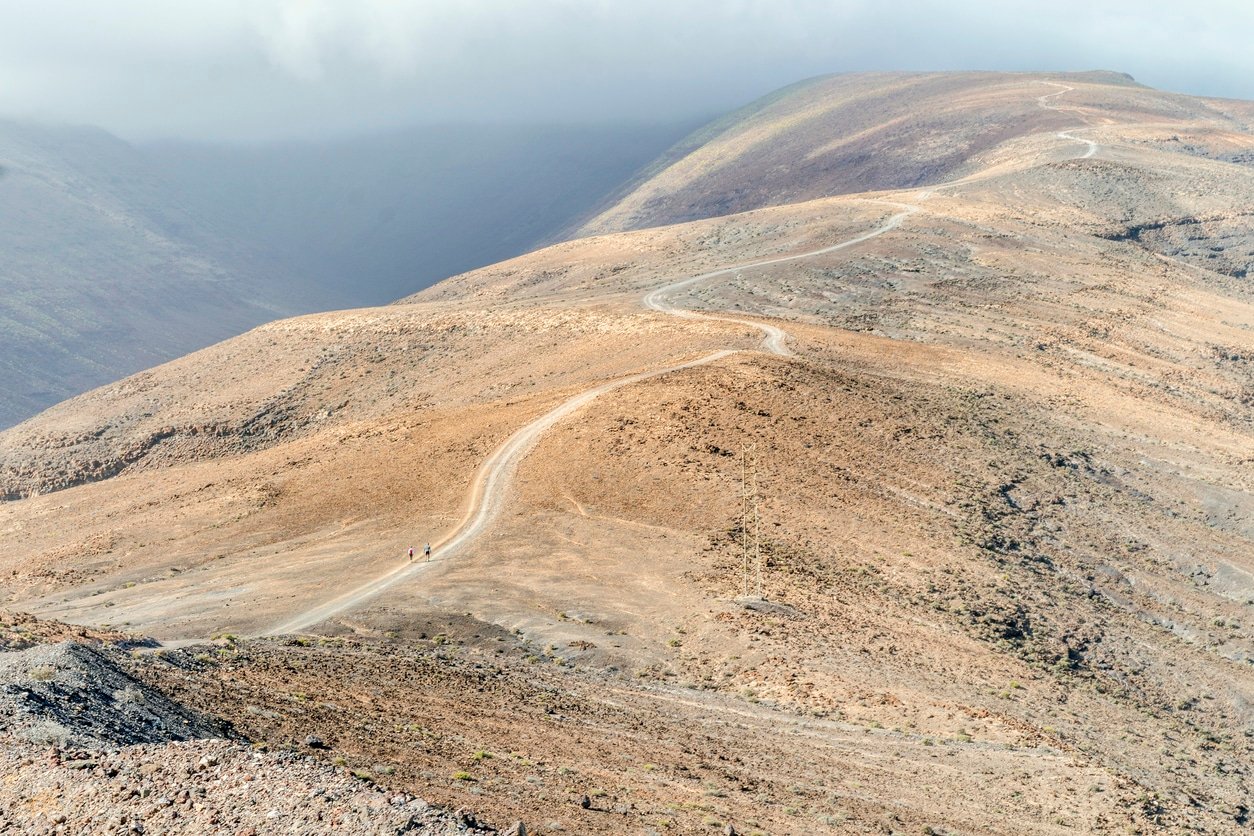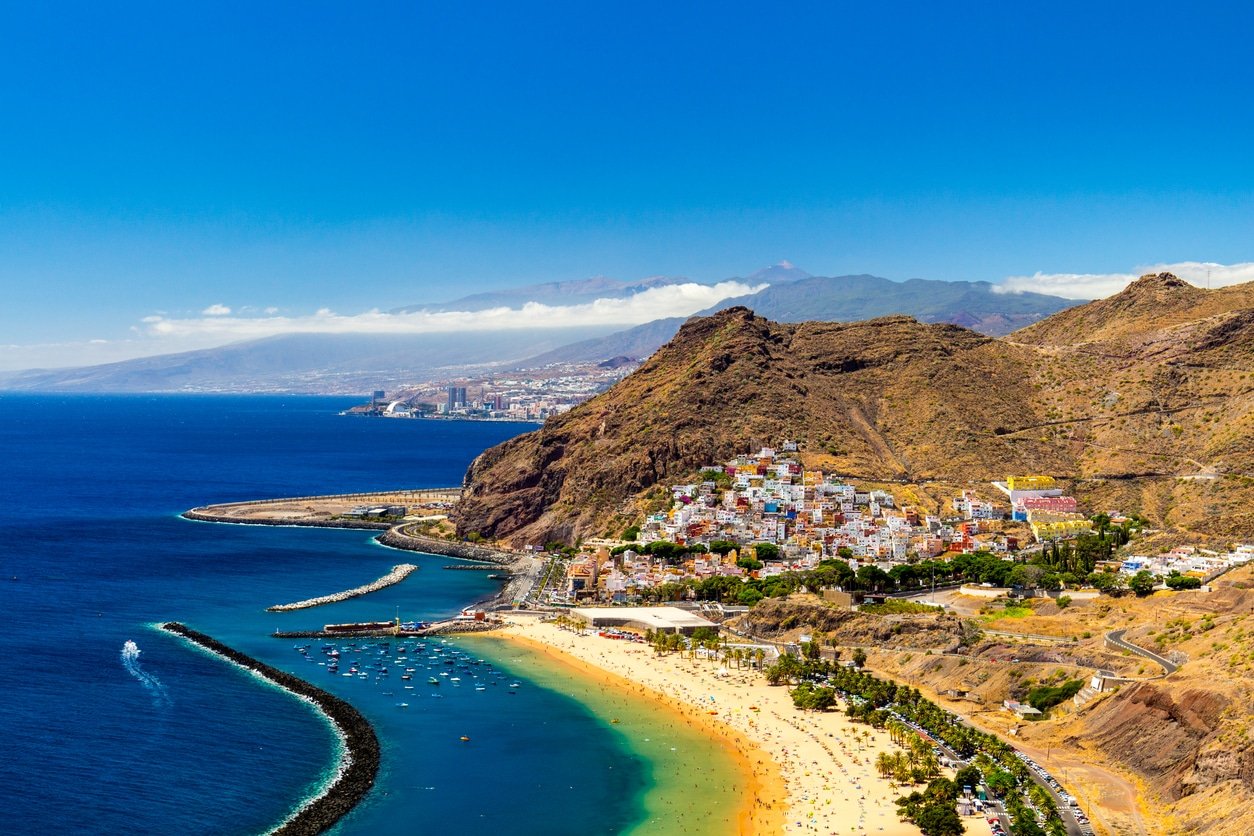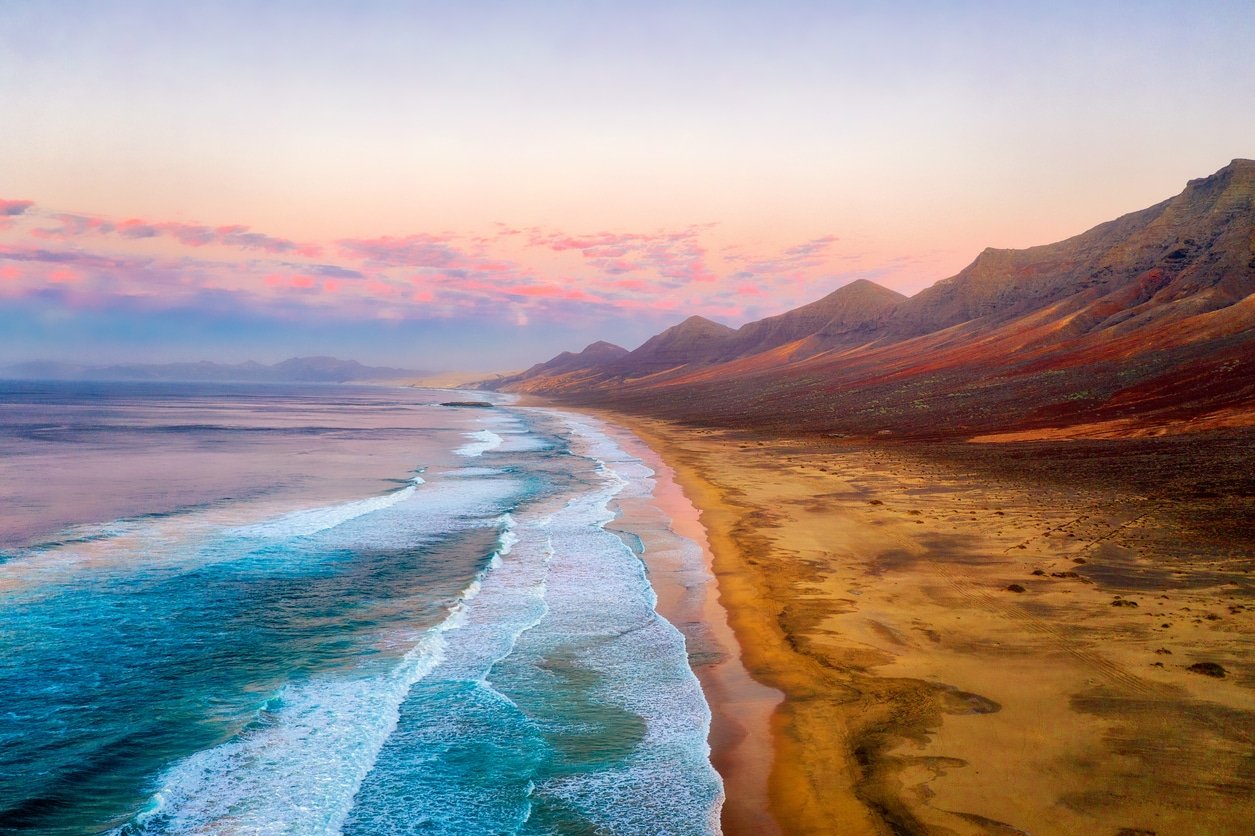Fuerteventura or Tenerife: The Honest Comparison You Need!
|
Prefer listening over reading? We got you covered!
Getting your Trinity Audio player ready...
|
If you’re looking for year-round sunshine without the need for a long-haul flight from Europe, then the Spanish Canary Islands could be just what the doctor ordered. The Canary Islands have been welcoming sun-seeking tourists since the beginning of package holidays, and they are still as popular as ever. But which island – Tenerife or Fuerteventura – is the better choice for you?
Tenerife is the largest of the Canary Islands and is the home of some stunning beaches and Spain’s highest peak. The southern resort towns, and their vibrant nightlife, are some of the most popular holiday destinations in Europe, and the island also boasts excellent surfing, hiking, and scuba diving.
Fuerteventura is slightly smaller, but is much quieter despite being the Canaries’ second largest island. Whether you are looking for a relaxing beach holiday or an activity-rich getaway, Fuerteventura’s blend of excellent beaches, top-class windsurfing, and hiking trails across Martian landscapes ensures there’s something for everybody.
So, which one is for you? Read on as we dive deep into the similarities and differences between these two delightful Spanish islands to help you plan your perfect holiday in the sun…
Contents:
- Which Is Easier To Get To?
- Which Has The Best Vibe?
- Which Is Better For Beaches?
- Which Has The Best Hotels?
- Which Is Better For Watersports?
- Which Is Better For Hiking?
- Which Is Best For Families?
- Which Is Better For Digital Nomads?
- Which Is More Expensive?
- What Time Of Year Is Best?
- Fuerteventura vs Tenerife: Which Is Better?

Which Is Easier To Get To?
One of the main similarities between the two destinations is the ease with which you can get to each island. As both are major European tourist destinations, you should not have a huge problem sourcing a flight to either. But, with Tenerife being the busier island and having two airports, it may be slightly easier to find a flight to match your dates perfectly.
To fly to Tenerife, you need to decide which airport suits you best between Tenerife North (TFN) and Tenerife South (TFS). Tenerife South is located in the heart of the tourist towns on the island’s south coast, whereas Tenerife North is closer to the island’s main city of Santa Cruz.
Santa Cruz is located towards the north-west of the island, near the Anaga Nation Park, and is a more popular choice for locals, as many live in Santa Cruz.
Getting to Fuerteventura is easier in that you do not need to choose an airport — there is only one. However, the airport on Fuerteventura receives plenty of flights from most major European cities, and there should not be too many problems finding a flight to suit your dates.
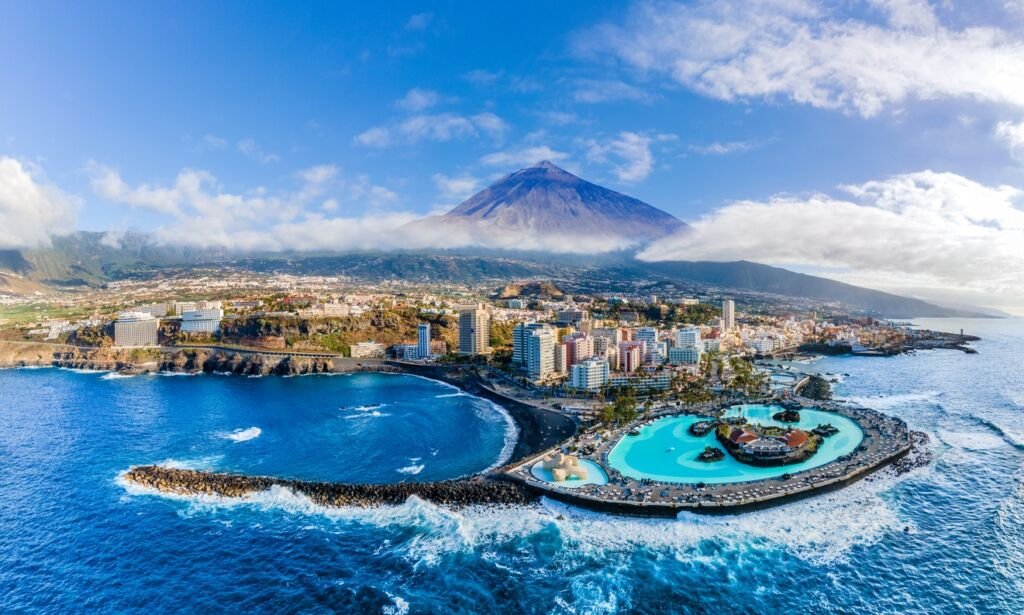
Which Has The Best Vibe?
Of the Canary Islands’ eight main islands, Fuerteventura and Tenerife are the two largest, yet these two islands have very distinct vibes.
Tenerife, as the largest Canary Island, has the largest population within the group, yet Fuerteventura, as the group’s second largest island, has the fourth largest population. So, in simple terms, if you’re looking for a more peaceful, nature-based holiday, Fuerteventura is the more tranquil of the two islands.
Despite its size, Fuerteventura is scarcely populated; of the estimated 85,000 people, almost half live in the island’s main city, Puerto del Rosario. This means Fuerteventura is a great place if you’re looking to get lost in nature and drive along roads on which you’ll never come across a traffic jam.
Tenerife, on the other hand, is the most populated of all the Spanish islands (including the Balearic ones), and life is a little more hustle and bustle here. The island’s population is a little less than 1 million people, a quarter of whom live in its capital, Santa Cruz. Still, if you’re looking for parties, malls, and a rather cosmopolitan atmosphere, Tenerife is your place.
If, on the other hand, you’re just looking for tranquility, smaller crowds, and pristine beaches, head to Fuerteventura.

Which Is Better For Beaches?
Both islands’ coastlines are dotted with excellent beaches. But beach bums and fans of water sports will find their paradise on Fuerteventura’s quieter beaches, as there are several remote coves and rugged, windswept beaches. Driving around the island, it’s simple to find yourself with a whole beach to yourself.
By comparison, the shoreline of Tenerife is more heavily populated and the best beaches are busier. Although there is a nice selection of both pebble and sand beaches, they don’t feel as “untouched” as those on Fuerteventura.
Many of Tenerife’s beaches are fringed with restaurants and beach bars, and lack the untamed, secluded atmosphere of Fuerteventura’s offerings, but are better if you are looking for more traditional beach activities and shopping nearby.
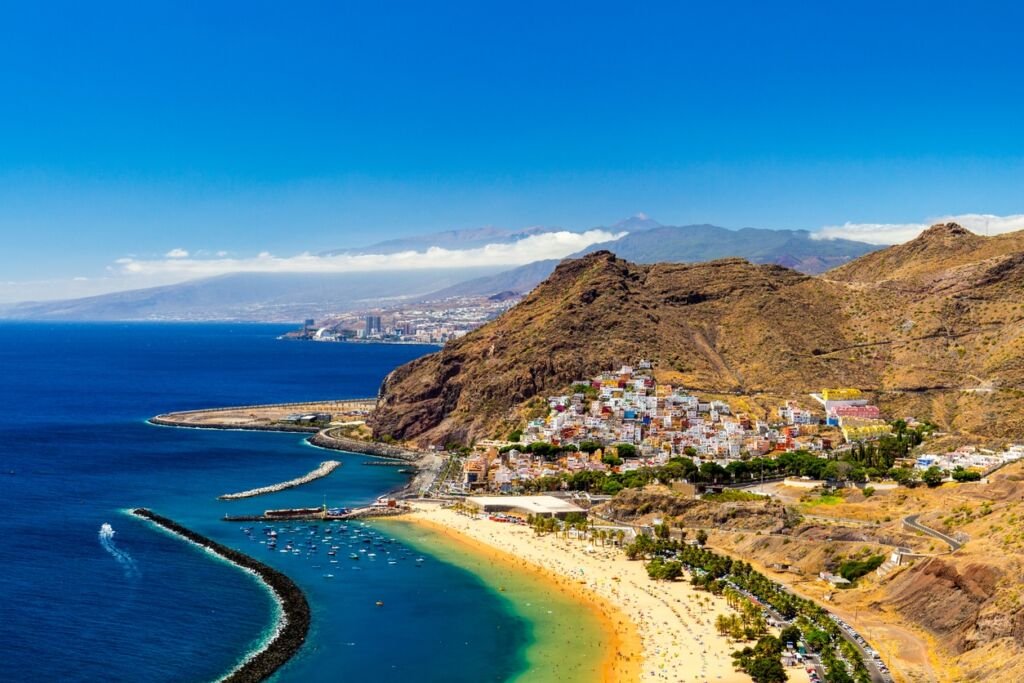
Which Has The Best Hotels?
As major European tourist destinations, there is no shortage of accommodation options on either island. Whether you are looking for a sprawling five-star luxury resort or a simple-yet-comfortable budget-friendly option, there’s something to suit every budget and needs on both islands.
Fuerteventura
Best budget option: The one-bedroom bungalows at Castillo Playa are decorated with tiled floors and pine furniture, and feature a TV, a safe, a kitchenette and a private bathroom. Free WiFi is available throughout the property, and the location is close to the beach at Caleta de Fuste. See photos and rates here.
Best mid-range option: With an excellent location near Corralejo, Hélène Holidays and Retreats offers beachfront accommodation with an outdoor swimming pool, a garden and a terrace. The rooms are equipped with a flat-screen TV and a coffee machine, and the hotel is close to Las Clavellinas and Corralejo Viejo beaches. See photos and rates here.
Best luxury option: Hotel Secrets Bahía Real Resort & Spa is a 5-star adults-only resort located on the beach in Corralejo. The facilities are second to none. There are two outdoor pools, seven restaurants, four bars, and a spa.
Many rooms afford impressive views of the Atlantic and the nearby islands of Lobos and Lanzarote, and the hotel is perfect for recharging the batteries. See photos and rates here.

Tenerife
Best budget option: Located a mere 2.5 km from the centre of Playa de las Americas, Endless Summer House is an excellent bed and breakfast offers private rooms and dormitories, with free WiFi throughout.
With barbecue facilities and a communal area featuring a kitchen, fridge, and microwave, it’s a great choice if you’re minding the budget. See photos and rates here.
Best mid-range option: Sol Arona lies a stone’s throw from the beach of Los Cristianos, and features a huge outdoor pool and rooms with balconies, most with sea views.
There’s also a separate pool for children and a playground to keep the little ones entertained. There’s also a buffet-style restaurant and a gym onsite too. See photos and rates here.
Best luxury option: Located in Adeje in the south of Tenerife, Royal Hideaway Corales Beach boasts 3 swimming pools, restaurants (including the Michelin-starred restaurant El Rincón de Juan Carlos), bars, a spa, and an extensive gym.
The excellent location, close to Playa de las Americas and stunning ocean views, makes this a great option for those seeking a bit of pampering and luxury whilst on holiday. See photos and rates here.
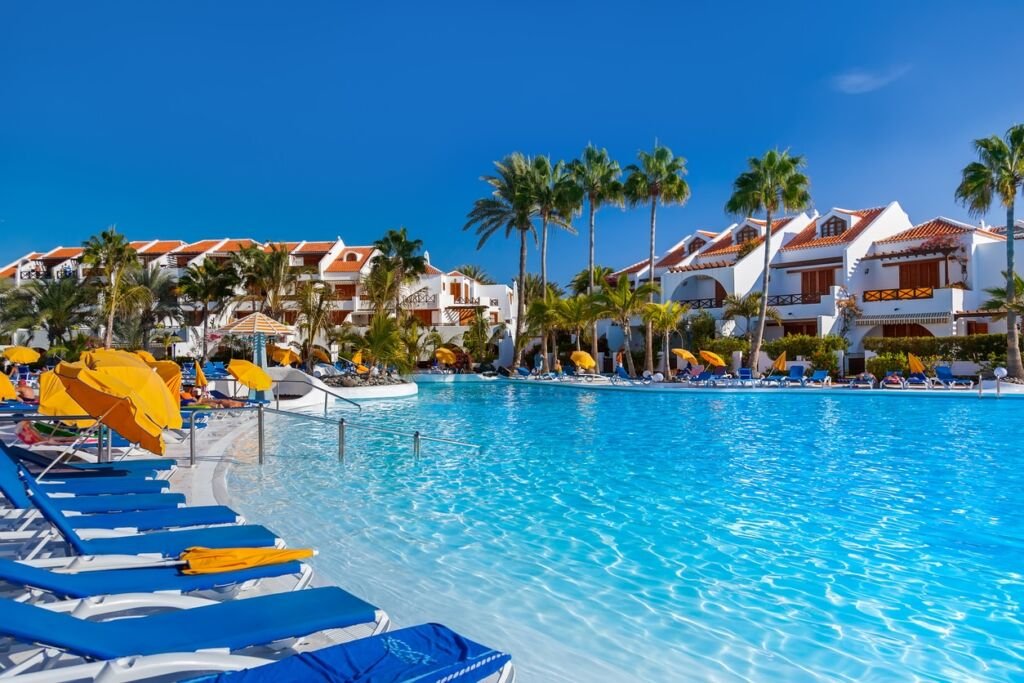
Which Is Better For Water Sports?
Both islands offer the opportunity to enjoy the ocean and partake in various water sport activities.
Fuerteventura is famous for its wind – its name even roughly translates as ‘strong wind’ – making it a popular spot for wind- and kite-surfers. Tenerife also has some surf, and both islands are popular for scuba diving and snokeling.
Surfing
The Canary Islands offer a mix of reefs and sand-bottomed breaks, and there’s usually warm weather and moderately warm seas. Coupled with the fact that the waves are reliable throughout the year, the island group is popular for surfing. You will be able to find decent waves and surf camps on both islands.
On Tenerife, you can find surfable waves right in the middle of the tourist towns, but the better surf is towards the north of the island, with the Punta del Hidalgo region in the north being popular.
As far as surfing in Fuerteventura goes, it’s also the northern half of the island that comes up trumps, with Corralejo having most of the surf schools on the island. More experienced surfers may prefer El Cotillo. It’s known for its stunning Shell Beach, with the southern end of the beach attracting more seasoned surfers.

Windsurfing
With reliable winds and an endless blue ocean to explore, the Canary Islands boast some of the best windsurfing spots in the world. And you can find excellent windsurfing opportunities in both Tenerife and Fuerteventura.
In Tenerife, El Medano is the only major spot for windsurfing. It’s a world-class windsurfing destination that regularly plays host to various top-level competitions, including the PWA World Tour. The wind is generally strong year-round, making it even more appealing.
El Medano is very close to the southern airport on the island, so if you are traveling with a board, this may be the more convenient airport to fly to.
However, Fuerteventura has a few more excellent spots and may be the better choice for a windsurf holiday.
The top spots on Fuerteventura are towards the north of the island – Corralejo and El Cotillo. Both are very popular windsurfing spots on the island, with El Cotillo offering more favorable conditions for the less experienced.
The conditions in Corralejo can also be excellent for beginners, but the schools often take novices on the short drive to El Cotillo for their first experience on a board.
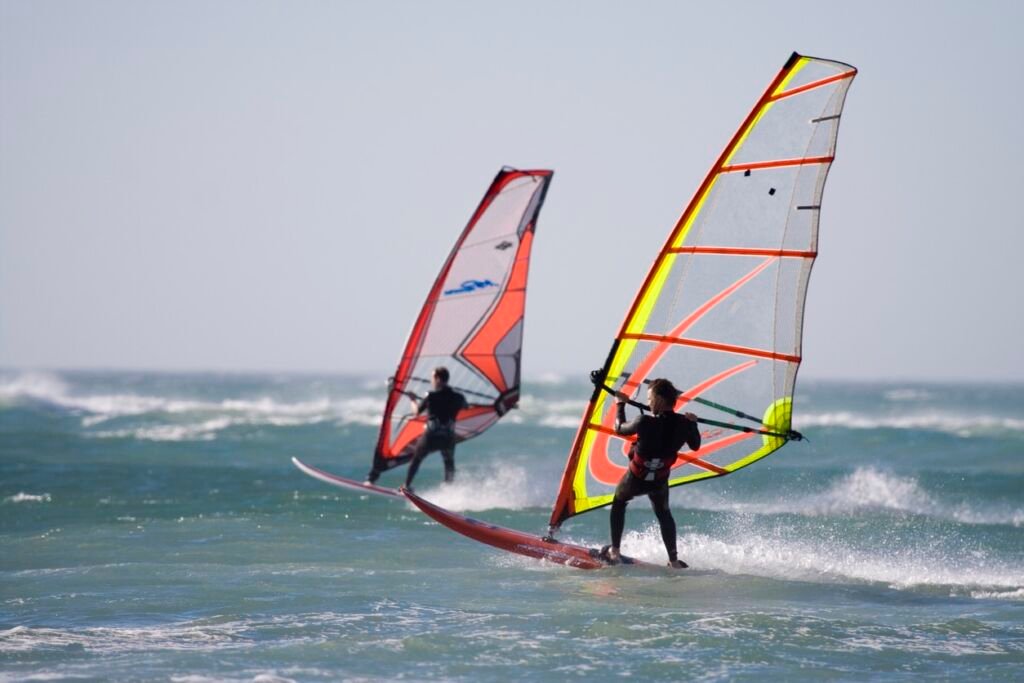
Kitesurfing
Both islands can deliver on the kiteboarding front too. Kiteboarders generally enjoy the same conditions as windsurfers, and the locations to head to on each island to kitesurf are the same as those for windsurfing.
In simple terms, both islands have excellent kiteboarding conditions and locations, but Fuerteventura offers a greater choice of places to get into the water.
With more choice, you are less likely to be hampered by the weather, and overall, Fuerteventura is the better choice for some serious kiteboarding action.
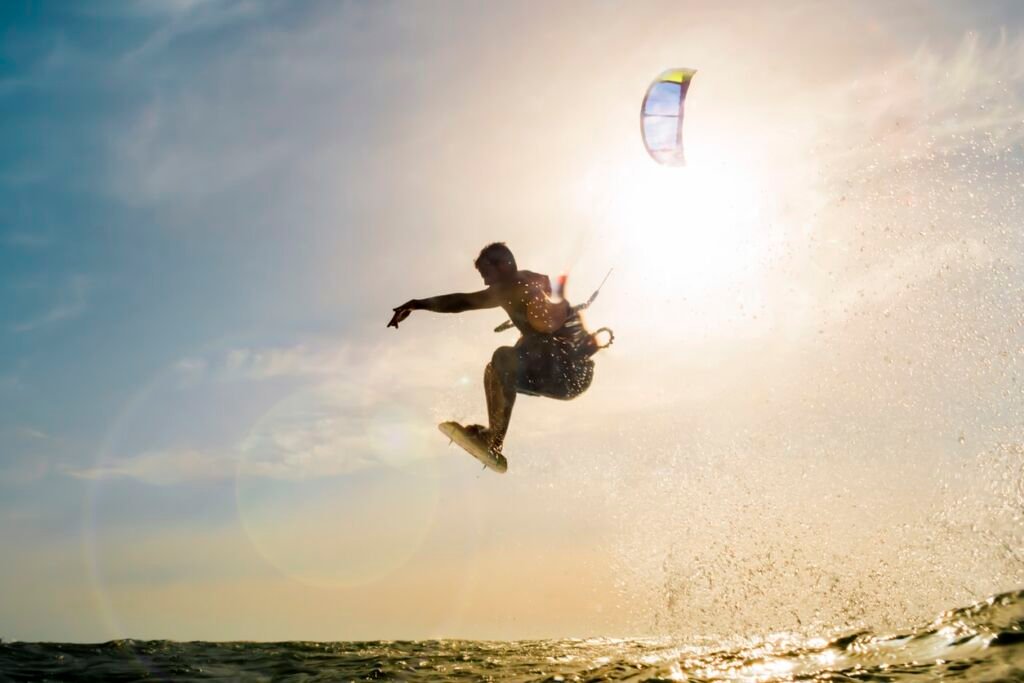
Scuba Diving
If you prefer to spend your free time below rather than on top of the waves, then you will be pleased to know that the Canary Islands offer some of the best scuba diving in Europe too.
The islands’ waters are home to turtles, rays, sharks, and myriad other cool creatures below the surface, and the climate means the water is relatively warm.
Tenerife’s biggest draw on the scuba diving front is a dive site called Los Chuchos, meaning The Rays. The site is at the southern tip of the island and is a great place to dive with giant stingrays. Divers here may also be rewarded with turtle sightings, and keep your eyes in the sand to spot a resting angel shark.
Fuerteventura’s best dive sites are located on the Salinas Reef, close to the airport. Salinas Reef is a large reef, needing a few dives to see it all, and is a great place to spot angel sharks partially buried in the sand.
Being the windier Canary Island, the northern shores of Fuerteventura can get a little choppy at the surface, but the southern sites are more gentle and suitable for all levels, including first-timers.
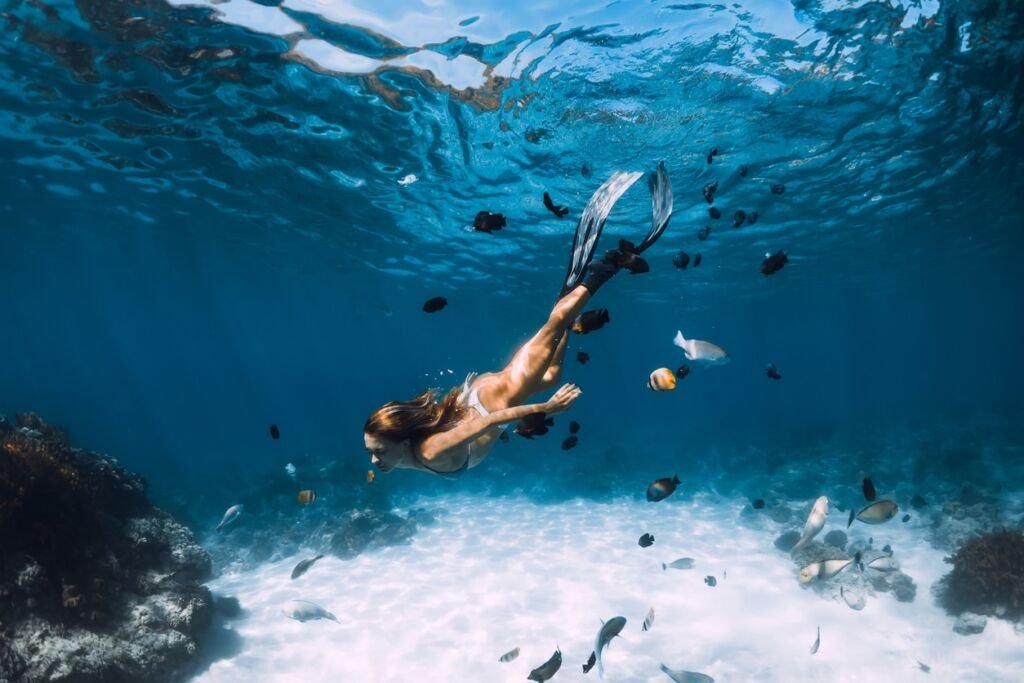
Which Is Better For Hiking?
The Canary Islands are also well known for their hiking possibilities and attract walkers and hikers throughout the year.
While both Tenerife and Fuerteventura offer some interesting trails, only one of these islands provides the opportunity to conquer Spain’s highest peak – Mount Teide.
On Tenerife, there are plenty of walks to suit all levels, and it offers the most diverse landscapes of the two islands. The national park of Anaga, in the north-east of the island, features a lush landscape, and the drier landscapes of Teide National Park are more barren and moon-like.
Teide National Park is home to Mt. Teide, Spain’s highest peak at 3,718 metres. The chance to hike to the top of Spain’s highest peak makes the trails to the summit a little busy at times, but it’s a stunning trek.
Fuerteventura sits closer to the Moroccan coastline, and as such, its landscapes is a little more barren and desert-like.
Whilst Fuerteventura can’t compete with Tenerife on the altitude front, the island does boast the longest trail in the archipelago, with the trail running the length of the island, totaling 160 kilometers.
But aside from this trail, the other trails on the island are not as well marked as on Tenerife, so you will need a good map too.
While both islands offer decent trails in diverse terrain, the draw of climbing Mt. Teide makes Tenerife a more appealing island to hikers.
Recommended: The Best Hikes In Fuerteventura For Views & Fun!

Which Is Best For Families?
Tenerife is the bigger island, so there will be more going on to keep you and the kids entertained on your holiday.
The north of Tenerife is great for getting the whole family immersed in nature, while the south of the island has all the traditional amenities a family could need on holiday, such as shops, restaurants, and bars.
If you need to tire the kids out, you can take them for a day at Siam Park for some fun on the waterslides, and the southern beaches are nice and calm for a family swim.
Fuerteventura is a little more rustic and rugged, but is still a fine place for a family holiday, especially if the children are a little older; and it’s perfect for active kids to try water sports.
For a family setting on Fuerteventura, Jandia, on the island’s southern tip, is a small resort town with some restaurants and shops. It’s perfect for families who like to be close to amenities but far enough away from the hustle and bustle of the major resort towns on Tenerife.

Which Is Better For Digital Nomads?
With the Canary Islands being Spanish, digital nomads with EU passports can stay and work in the country for a period not exceeding 180 days without needing to register officially. And this period increases to 365 days for visitors coming from the Schengen region.
The excellent climate and ease of staying long-term make the islands appealing to digital nomads. Factor in the high-speed internet, especially in the big towns, and it’s easy to see why the islands are gaining popularity as a base for online and remote workers.
If fast internet speed is essential for your online work, then Tenerife may be the better choice as a base.
Tenerife is home to Santa Cruz, the second largest city in the archipelago, behind Las Palmas de Gran Canaria. As a large city, Santa Cruz has excellent infrastructure, and you can expect internet speeds of around 85 Mbps, with Fuerteventura’s average internet speed being closer to 55 Mbps.
Both islands have some co-living and co-working spaces available, but as Tenerife is larger, there are a few more options to choose between here.

Which Is More Expensive?
Throughout the Canary Islands, you will find prices to be pretty similar. The two biggest outlays – flights and accommodation – should be comparable for the two destinations.
Tenerife, being the larger island and having two airports, may be a little cheaper in this respect, but overall the differences should not be too big. You should be able to find comparable accommodation on the two islands at similar prices.
Food and drink prices are also similar, as are the prices for joining various activities. But in general, your choice between the two destinations shouldn’t be guided by price alone. Choose the island that best meets your vacation needs, and you should have no trouble planning a vacation within your budget for either location.

What Time Of Year Is Best?
The geographical location of the Canary Islands makes them a popular choice throughout the year. With less than 1,000 kilometers separating Fuerteventura from Morocco, the island group is blessed with a subtropical African climate. And with less than 200 kilometers between Tenerife and Fuerteventura, you can expect a similar climate in both locations.
While the weather is great throughout the year, if you are holidaying for a particular reason—for windsurfing or for beaches—then you may want to plan accordingly to ensure the best weather to suit your holiday.
The islands record the highest temperatures in June, July, and August, which makes these months very popular and potentially a little more expensive. The autumn months are a little quieter, but they enjoy the warmest ocean temperatures.
And with the winter months still seeing plenty of sun hours, the islands can still get packed with northern Europeans seeking an escape from their cold winter.
Watersports enthusiasts will be happy to know that the two islands have some decent wave action throughout the year, with the summer months bringing more wind and the winter months seeing big waves on the southern beaches…
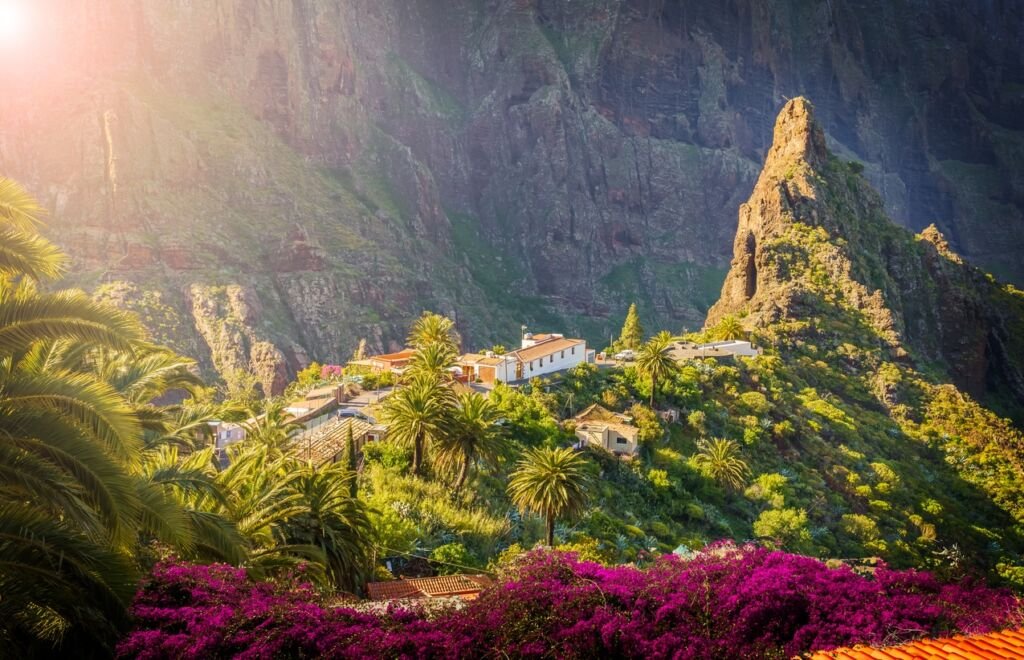
Fuerteventura vs Tenerife: Which Is Better?
While both islands can deliver an amazing holiday, the choice of which one is best for you should depend on what type of holiday you are looking for.
Fuerteventura would be the best island for beaches and water sports, and Tenerife would suit those seeking a resort setting, hiking, and shopping.
If surfing, kiteboarding, or windsurfing are on the cards, maybe Fuerteventura will better suit your needs, while those looking for a traditional beach holiday or a hiking holiday will prefer Tenerife.
Whichever way you decide, you’re sure to enjoy a memorable holiday in one of Europe’s premier holiday destinations. Make sure your passport is up to date, pack the sunscreen and beach wear, and enjoy a great holiday in the Canary Islands…


